Winchester Native Plants: Thrive in Clay & Save Water
Quick Guide to Clay-Friendly Native Gardening:
- Winchester & Ottawa area clay soil can be challenging but holds nutrients and water well.
- Native plants are adapted to local conditions, including clay, requiring less water and care once established.
- Benefits include water conservation, supporting pollinators, and reduced maintenance.
- Key native plants for clay include Purple Coneflower, Black-Eyed Susan, Little Bluestem, Wild Geranium, and Large-leaved Aster.
- Proper planting involves wide, shallow holes, minimal amendment in the hole, and surface compost/mulch.
- Need help transforming your clay yard? Request a quote today!
Introduction: Ditch the Digging Drama – Native Plants Love Winchester Clay!
Let’s be honest, gardening in the Ottawa area, especially around Winchester, Greely, and Osgoode, often means battling *that* soil. You know the one – the heavy, sticky clay that can feel more like concrete than fertile ground after a dry spell, or a mucky swamp after rain. Does your shovel sometimes just… *bounce*? Have you questioned your life choices mid-dig? We hear you! Trying to force fancy, non-local plants into this challenging soil can feel like a losing battle, leading to frustration and a lot of unnecessary digging drama.
But what if we told you there’s a simpler, smarter way to landscape? Introducing the unsung heroes of your garden: native plants! These aren’t delicate newcomers; they are the tough, resilient locals that grew up right here in Eastern Ontario. They evolved alongside our specific climate and, yes, even our infamous clay soil. Many native species don’t just tolerate clay; they actually thrive in it, sending down roots that can handle the density.
Choosing native plants means less soil amendment hassle, significantly less watering once established (great for water conservation!), and a beautiful garden that supports local pollinators. It’s time to work with your Winchester clay, not against it!
Understanding the Beast: Why Clay Soil Isn’t (Always) the Bad Guy
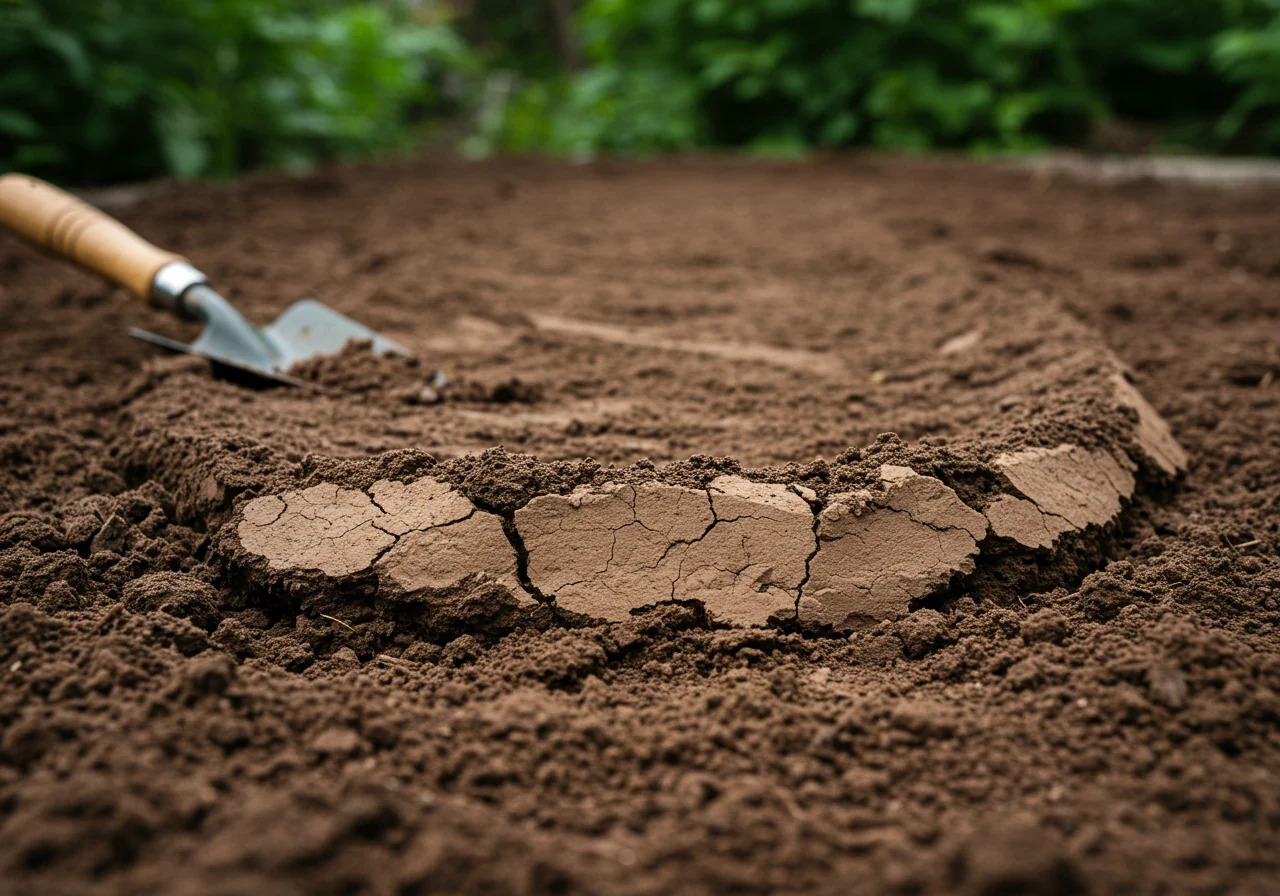
Okay, let’s talk about clay soil. Around Ottawa, especially in areas like Nepean or Winchester, encountering clay is pretty much a gardening rite of passage. It gets a bad rap, often called “gumbo,” “concrete,” or just plain difficult. And sometimes? Yeah, it earns those names when your shovel practically bounces off the surface.
So, what *is* clay soil? Imagine super, super tiny particles all packed together tightly, like flour instead of beach sand. This tight packing is where the main landscaping challenges pop up:
- Drainage Drama: Water has a tough time finding its way through those packed particles. After a good rain, you might get puddles that stick around longer than welcome guests, potentially drowning plant roots that need air to breathe.
- Compaction Calamity: When clay dries out, those tiny particles can bake together into something remarkably brick-like. Shovels protest loudly, and delicate plant roots struggle to push through. This is a common headache for homeowners looking to start a new garden bed. Managing these specific site issues is key, and understanding how they create unique conditions is part of effective Nepean garden care and microclimate management.
But wait! Before you throw in the trowel, here’s the twist: clay soil isn’t *all* bad. That tight structure actually has a major superpower: it holds onto things *really* well!
- Nutrient Hoarders: Unlike sandy soil where precious nutrients can wash away with the first downpour, clay particles grab onto essential plant food like potassium, calcium, and magnesium. They hold them securely for your plants to use later. Think of it as a built-in nutrient savings account!
- Water Reservoir: While too much water sitting around is bad (see Drainage Drama above), clay’s ability to hold onto some moisture is fantastic during dry spells. Your plants have a reserve to tap into when the rain stops, making them more resilient.
The secret to successful gardening in clay isn’t necessarily to fight it tooth and nail, but to work with it. Improving the soil structure over time with generous amounts of compost is always a good idea – it helps loosen the particles, improving drainage and workability. You can learn more about the importance of good soil on our soil preparation page. Even more importantly, choosing plants that naturally don’t mind having “clay feet” makes a huge difference in your gardening success and effort levels. Many fantastic that demand perfect, sharp drainage. Learning what flourishes in your specific clay patch is part of the rewarding gardening journey; keeping track can really help, which is why we recommend tips for . Thoughtful planning goes a long way, too, making Winchester garden design crucial for your oasis.
Understanding your soil is the vital first step to creating a beautiful, thriving landscape that doesn’t require constant battle. If dealing with heavy clay still feels daunting, exploring professional landscaping and garden care services can provide the expert help and support you need to tame the beast. Check out our reviews on Google My Business to see how we’ve helped others!
Native Plant Superheroes: Why Local is Lekker (and Lower Maintenance!)
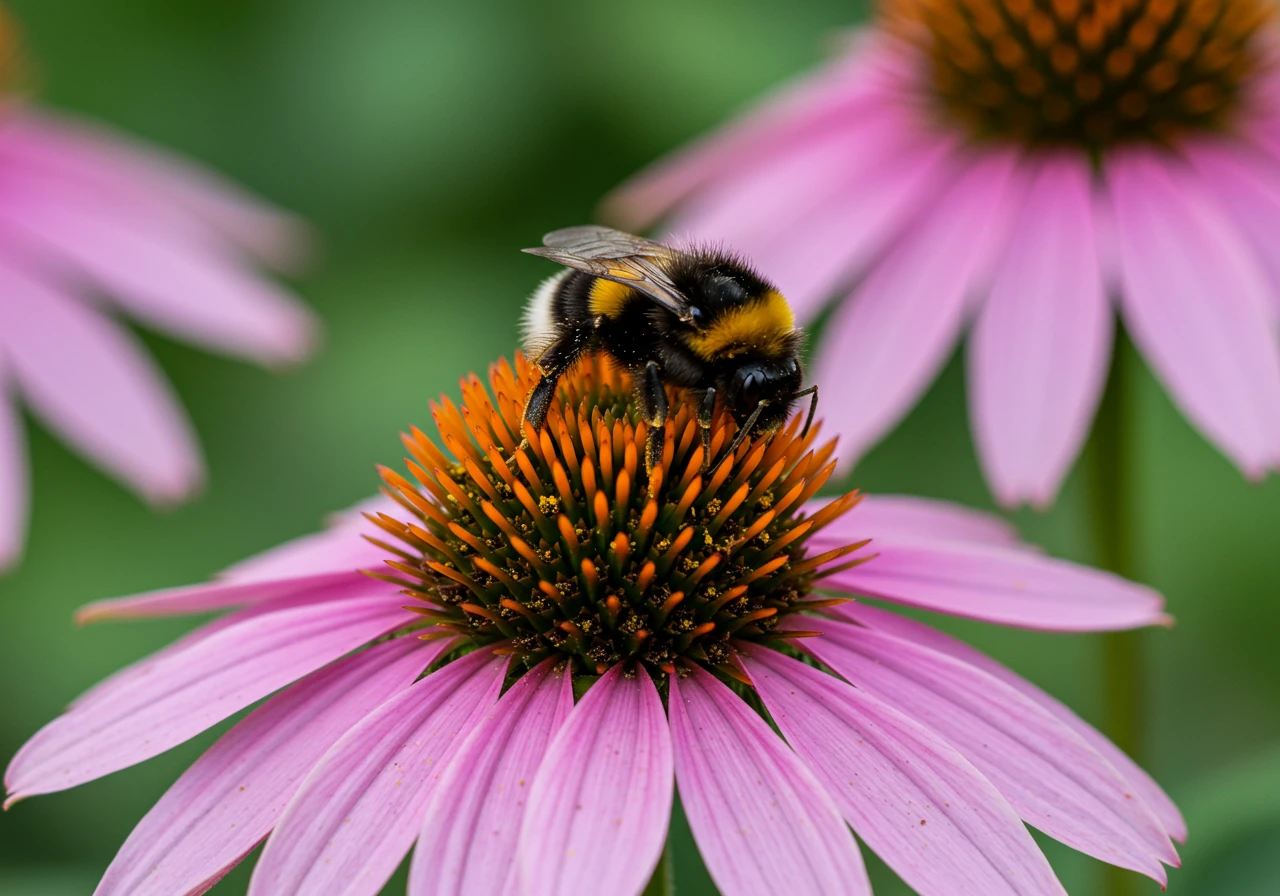
Alright, let’s roll out the green carpet for the real VIPs of your garden: native plants! Think of them as the superheroes of the plant world, especially here in the Ottawa region. Unlike some fussy imports that demand constant attention, these local champions grew up dealing with our weather mood swings – from sizzling summers to bone-chilling winters – and yes, even that notorious clay soil we often find in areas like Metcalfe. They’re already adapted. No need for fancy life support systems; they know the drill.
This built-in toughness translates directly into less work for you. Lekker, right? Because they’re suited to our conditions, native plants generally need less coddling. That means less time spent fertilizing, less worrying about pests (they often have natural defenses!), and significantly less watering once they’re established. After their first year or so, many native species are surprisingly drought-tolerant, sipping water wisely instead of guzzling it. This saves you time, money on your water bill, and is kinder to our local water resources. It’s a win-win-win! If prepping the space for these low-maintenance stars seems daunting, consider getting help with the initial clearing; a Metcalfe property cleanup service can tackle overgrown areas efficiently.
But the superhero story doesn’t end there. Planting native species is like throwing a welcome party for local wildlife. Native plants provide essential food and shelter for the bees, butterflies, birds, and beneficial insects that evolved alongside them. Think vibrant Coneflowers buzzing with bees, or Milkweed hosting Monarch butterfly caterpillars. Your garden becomes a crucial part of the local ecosystem, supporting biodiversity right in your backyard. It’s a beautiful way to give back to nature. Keeping these areas tidy while preserving habitat is key; reliable help like an Ottawa-wide garden clean-up ensures your native plantings thrive year after year. For those further south, similar support is available, like a dedicated Winchester garden clean-up service or a Marionville garden clean-up service. We also offer specific Metcalfe garden clean-up tailored to local needs.
Feeling inspired? Start small! Try adding just a few native perennials like Wild Geranium or Black-Eyed Susans. Observe what thrives in your specific spot. Local nurseries specializing in native plants are fantastic resources (check out resources like the Rideau Valley Conservation Authority for local plant info). And remember, while natives are lower maintenance, creating and maintaining any garden involves some effort. If you need a hand getting started or keeping things looking sharp, exploring professional garden maintenance solutions can make the process even smoother. Always ensure you’re comfortable with the scope of any assistance by understanding our service commitments. Choosing native plants is simply a smarter, more sustainable way to create a beautiful landscape you can truly enjoy, without all the drama. View our gallery or transformations page to see what’s possible!
Stars of the Clay Stage: Top Native Plants for Your Winchester Garden
Okay, let’s roll up our sleeves and get acquainted with some real troopers – the native plants that look at Winchester clay and say, “Bring it on!” These aren’t just survivors; they’re stunning additions that bring colour, life, and ecological benefits to your garden without demanding constant fuss. Choosing the right plant for the right spot is key in any landscaping project, and doubly so with challenging soil.
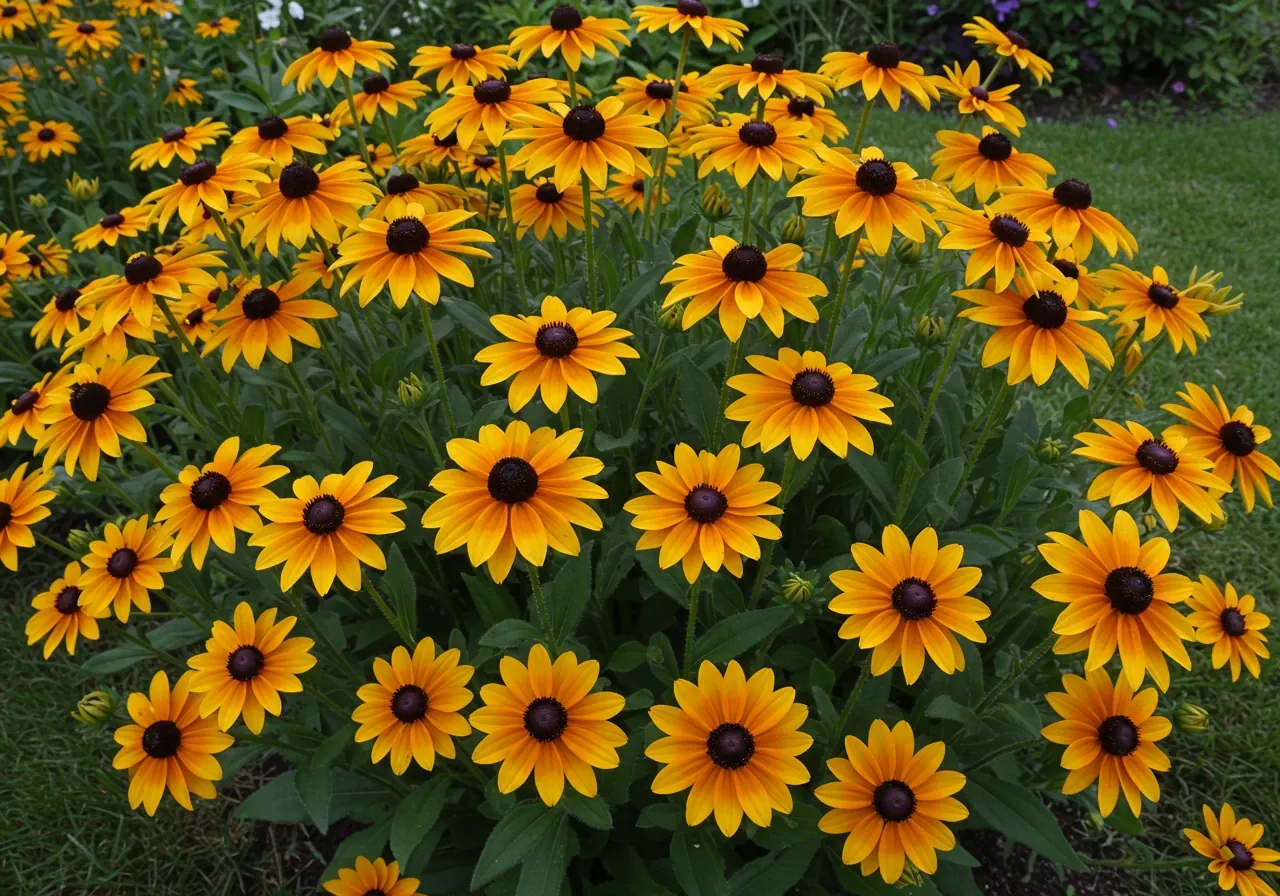
Here are some native superstars ready for their close-up on your clay stage:
For the Sunny Spots (6+ hours of direct sun):
- Purple Coneflower (Echinacea purpurea): You probably recognize this beauty! With its iconic purple-pink petals drooping around a spiky orange centre, it’s a pollinator magnet. Bees and butterflies adore it, and goldfinches feast on the seeds later in the season.
- Grows: 2-4 feet tall.
- Blooms: Mid-summer into fall.
- Clay Tolerance: Excellent. Its deep taproot actually helps break up dense soil over time!
- Bonus: Makes lovely, long-lasting cut flowers.
- Black-Eyed Susan (Rudbeckia hirta): Nothing says summer sunshine quite like these cheerful yellow daisies with their dark brown centres. They’re tough, adaptable, and self-seed politely (usually not aggressively). Perfect for adding a splash of reliable colour.
- Grows: 1-3 feet tall.
- Blooms: Mid-summer to early fall.
- Clay Tolerance: Very good. Doesn’t mind tougher conditions.
- Bonus: Another favourite for local pollinators.
- Little Bluestem (Schizachyrium scoparium): Don’t forget ornamental grasses! Little Bluestem is a fantastic native grass that offers year-round interest. Its fine, blue-green foliage turns a beautiful reddish-bronze in the fall, providing wonderful texture and winter structure.
- Grows: 2-4 feet tall.
- Blooms: Inconspicuous flowers followed by fluffy seed heads in late summer/fall.
- Clay Tolerance: Excellent. Very drought-tolerant once established.
- Bonus: Provides shelter for beneficial insects and seeds for birds. Great for adding movement to the garden.
For the Shadier Corners (Less than 4-6 hours direct sun):
- Wild Geranium (Geranium maculatum): A lovely woodland plant with delicate pink or lilac flowers in late spring. Its deeply cut leaves are also attractive and turn reddish in the fall. It forms nice clumps but isn’t overly aggressive.
- Grows: 1-2 feet tall.
- Blooms: Late spring to early summer.
- Clay Tolerance: Good, especially in soil that doesn’t stay constantly waterlogged. Likes moisture but needs some drainage.
- Bonus: Early nectar source for bees.
- Large-leaved Aster (Eurybia macrophylla): As the name suggests, this aster forms a groundcover of large, heart-shaped leaves. In late summer, it sends up taller stalks topped with clusters of small, white-to-pale-lavender daisy-like flowers. A real workhorse for dry shade!
- Grows: Leaves form a low mat (under 1 foot), flower stalks reach 1-3 feet.
- Blooms: Late summer to early fall.
- Clay Tolerance: Very good. Tolerates dry shade and clay remarkably well.
- Bonus: Important late-season nectar source when other flowers are fading.
Native Plant Quick Comparison:
| Plant Name | Sun Exposure | Height | Bloom Time | Clay Tolerance |
|---|---|---|---|---|
| Purple Coneflower (Echinacea purpurea) | Full Sun | 2-4 ft | Mid-Summer – Fall | Excellent |
| Black-Eyed Susan (Rudbeckia hirta) | Full Sun | 1-3 ft | Mid-Summer – Early Fall | Very Good |
| Little Bluestem (Schizachyrium scoparium) | Full Sun | 2-4 ft | Late Summer/Fall (Seed Heads) | Excellent |
| Wild Geranium (Geranium maculatum) | Part Shade – Shade | 1-2 ft | Late Spring – Early Summer | Good |
| Large-leaved Aster (Eurybia macrophylla) | Part Shade – Shade | 1-3 ft (flowers) | Late Summer – Early Fall | Very Good |
Getting Them Started Right:
Planting in clay requires a little extra TLC initially. Dig a hole wider than the plant’s pot, but generally no deeper. You don’t want the plant to sink! Gently loosen the roots if they’re circling in the pot. Backfill with the soil you removed – resist the urge to heavily amend the planting hole itself, as this can create a “bathtub” effect where water collects. Instead, focus on improving the overall garden bed over time by adding compost to the surface.
A thorough garden bed property clean-up before you start planting ensures you’re not battling weeds from day one. This is especially true if you’re converting a larger lawn area or tackling a neglected spot, tasks sometimes handled by an Ottawa-wide property cleanup service for bigger jobs. Even sites with particularly stubborn clay, perhaps similar to challenging projects taken on by a specialized Metcalfe property cleanup service, benefit greatly from good preparation. Consider also services like our Marionville property clean up if you’re in that area.
Water your new native plants regularly during their first growing season to help them establish strong roots. After that, their water needs should decrease significantly. The absolute best thing you can do after planting in clay is to apply a 2-3 inch layer of organic mulch (like shredded bark or wood chips). This helps keep the soil cool, suppresses weeds, and *most importantly* prevents the clay from baking into a hard crust, conserving precious moisture. Learning about effective mulching and edging techniques is time well spent for any clay gardener in Winchester or surrounding areas like Greely or Manotick.
When researching local nurseries for native plants (like those recommended by the City of Ottawa) or looking into gardening services online, it’s always sensible to understand how companies operate; for instance, you can usually review their website privacy policy to see how they handle information.
Get Your Hands Dirty (But Maybe a Little Less?): Planting & Caring for Natives in Clay
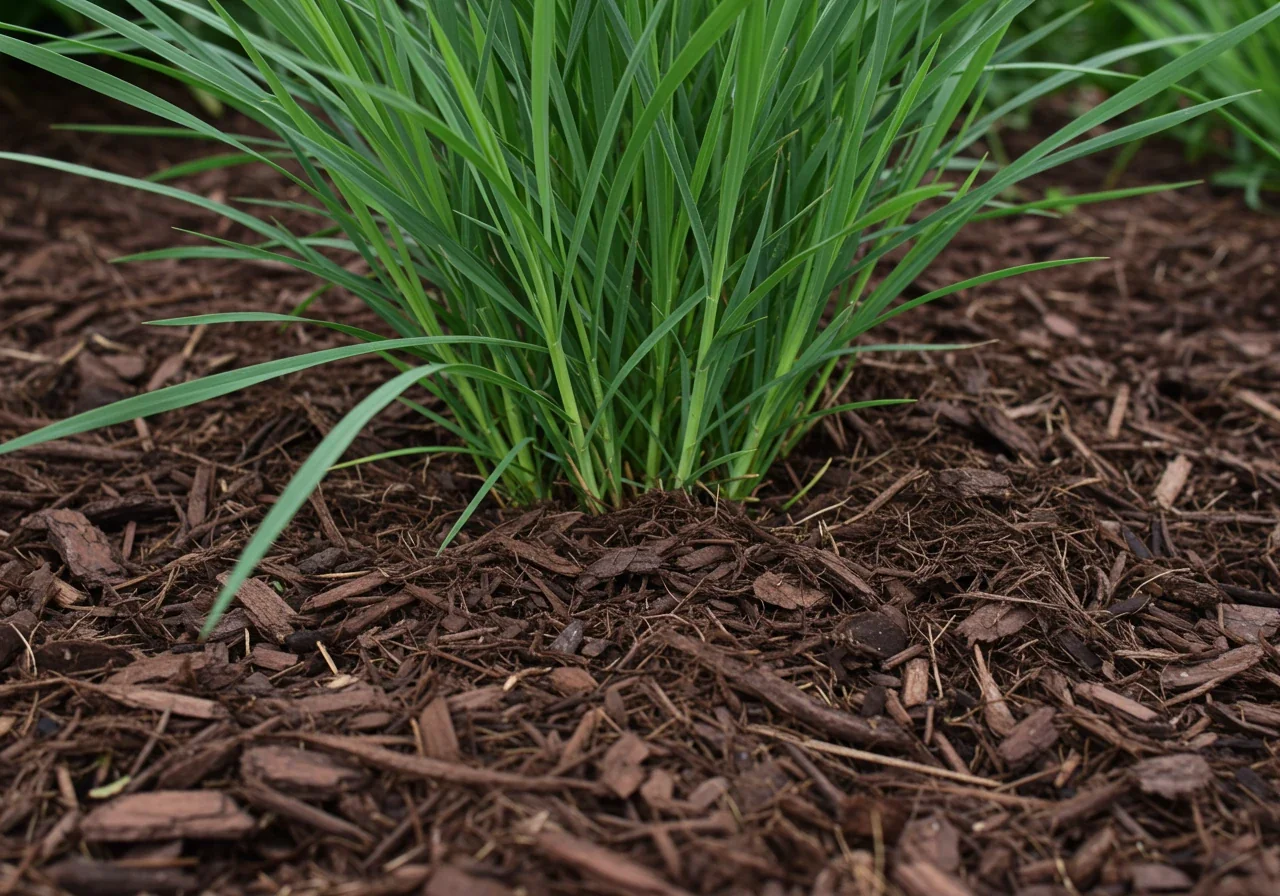
Alright, you’ve picked your native plant superheroes, you understand that clay isn’t pure evil, and you’re ready to get planting! Yes, there’s some initial digging involved (we can’t escape it entirely!), but the goal here is to set things up smartly so your future self thanks you for making low-maintenance choices. Let’s dive into making gardening in clay, whether you’re in Barrhaven, Richmond, or anywhere around Ottawa, a whole lot easier.
Step 1: Prep Smart, Not Hard
- Clear the Decks: First, remove any existing weeds or unwanted grass from your new garden bed area. If you’re dealing with a seriously overgrown space, sometimes getting professional help is the quickest way to a clean slate. Whether it’s a smaller job or requires a full Ottawa yard cleanup service, starting fresh makes planting much easier. Even in smaller communities, tackling neglected areas is key; residents nearby might seek out something like a Marionville yard cleanup service or Metcalfe yard clean-up for similar needs.
- Top It Off with Compost: This is the magic ingredient for clay. Spread a generous layer (think 2-4 inches) of good quality compost over the entire surface of your new bed. Don’t worry too much about digging it in deeply right away. You can gently work it into the top few inches, or just let worms and weather help incorporate it over time. Compost adds organic matter, which helps break up dense clay particles, improves drainage and water retention (weird, but true!), and feeds beneficial soil microbes. Our material selection guide can help choose quality compost.
Step 2: Plant Like a Pro (Even if You’re Not!)
- Dig the Right Hole: When you’re ready to plant your native beauties, dig a hole that’s about twice as wide as the plant’s pot, but no deeper than the root ball. Planting too deep in clay can suffocate the roots.
- Loosen Up: Gently tease apart any circling roots at the bottom of the plant’s root ball. This encourages them to grow outwards into their new home, not just keep spinning in place.
- Backfill Basics: Place the plant in the hole, making sure the top of its root ball is level with the surrounding soil surface. Backfill the hole with the soil you originally dug out. You can mix a little compost into this backfill soil, but avoid creating a pocket of super-rich soil surrounded by dense clay – this can act like a bathtub and hold too much water right around the roots.
- Give ‘Em Space: Pay attention to the mature size of your chosen native plants and space them accordingly. It might look sparse initially, but they’ll fill in!
Step 3: Water Wisely – Train Those Roots!
- First Year Focus: Newly planted natives need consistent moisture to establish their roots. Water deeply (so the water sinks down several inches) whenever the top inch or two of soil feels dry. Instead of frequent light sprinkles, aim for a good soak less often. This encourages roots to grow deeper in search of water, making them more drought-tolerant later.
- The Finger Test: The best way to know if it’s time to water? Stick your finger about two inches into the soil near the plant. If it feels dry, it’s time for a drink. If it’s damp, hold off.
- Wean Them Off: After the first growing season (sometimes two for shrubs or trees), your established native plants should need much less supplemental watering, often only during prolonged hot, dry spells.
Step 4: Mulch is Your Friend
- Apply Liberally: Once planted and watered, apply a 2-3 inch layer of organic mulch (like shredded bark, wood chips, or leaf mould) over the entire bed. Crucially, keep the mulch a couple of inches away from the base stems or crowns of your plants to prevent rot.
- Why Bother? Mulch is amazing for clay soil! It helps retain soil moisture, keeps roots cooler in summer and insulated in winter, suppresses weeds (hallelujah!), and slowly breaks down, adding more valuable organic matter. Consider our mulching services if you need assistance.
Step 5: Relax and Enjoy (Mostly!)
- Feeding: Forget heavy fertilizing; natives are adapted to local soil conditions and usually don’t need it. Too much fertilizer can actually harm them or make them floppy. The compost you add initially and the decomposing mulch provide plenty of nutrients.
- Weeding: Keep an eye out for weeds, especially while plants are young. Mulch helps immensely here.
- Cleanup: You can leave spent flower heads and stems standing over winter to provide food and habitat for wildlife, plus winter interest! Cut them back in early spring before new growth starts. Regular garden maintenance can keep things tidy.
While native plant beds require less fuss than traditional gardens, overall property maintenance still takes time. If you find yourself needing help with other areas, perhaps exploring Ottawa lawn care options or even sod installation for tricky spots could free up more time for enjoying your native oasis. And remember, if tackling a large planting project or managing ongoing care feels overwhelming, you can always request a free estimate to see how professional services might fit your needs. When contacting any service online, it’s good practice to understand how your information is handled; most reputable companies will have details available, such as in their online privacy policy.
By following these steps, you’ll be well on your way to a beautiful, thriving garden that works with your clay soil, supports local ecosystems, and asks for surprisingly little in return!
Drought Tolerance Champions
Native plants have evolved over millennia to survive the specific rainfall patterns of Eastern Ontario. Once established (usually after the first year), their deep or extensive root systems are highly efficient at finding and utilizing available moisture in the soil, including the reserves held by clay. This means they require significantly less supplemental watering compared to many non-native ornamentals, saving you time, effort, and water resources, especially during summer dry spells.
The Upside of Heavy Soil
While clay’s slow drainage can be a challenge, its structure offers surprising advantages. The fine particles tightly bind essential nutrients like potassium, calcium, and magnesium, preventing them from leaching away quickly. This creates a nutrient-rich environment that many native plants are adapted to exploit. Furthermore, clay’s ability to hold water means that moisture remains available to plant roots longer during dry periods, acting as a natural reservoir that supports plant resilience.
Fueling the Ecosystem
Native plants and local pollinators (bees, butterflies, moths, beetles, hummingbirds) share a long evolutionary history. Native flowers provide the specific nectar and pollen resources these creatures need, at the times they need them. Plants like Milkweed are essential host plants for Monarch butterflies. By planting natives, you’re creating vital habitat and food sources, directly supporting biodiversity and the health of the local ecosystem right in your own yard.
*Estimates based on typical reduced watering needs for established natives compared to high-water-use non-natives or lawns.
Your Ottawa Native Garden Through the Seasons
Okay, so you’ve embraced the native plant revolution! High five! Your garden is going to look fantastic and be a haven for local critters. But even these low-maintenance superstars appreciate a little seasonal TLC. Don’t worry, we’re not talking about endless chores – more like gentle nudges throughout the year. Here’s a quick look at keeping your Ottawa native garden happy through the seasons, aligning with our philosophy – you can learn more about our eco-friendly approach on our site.
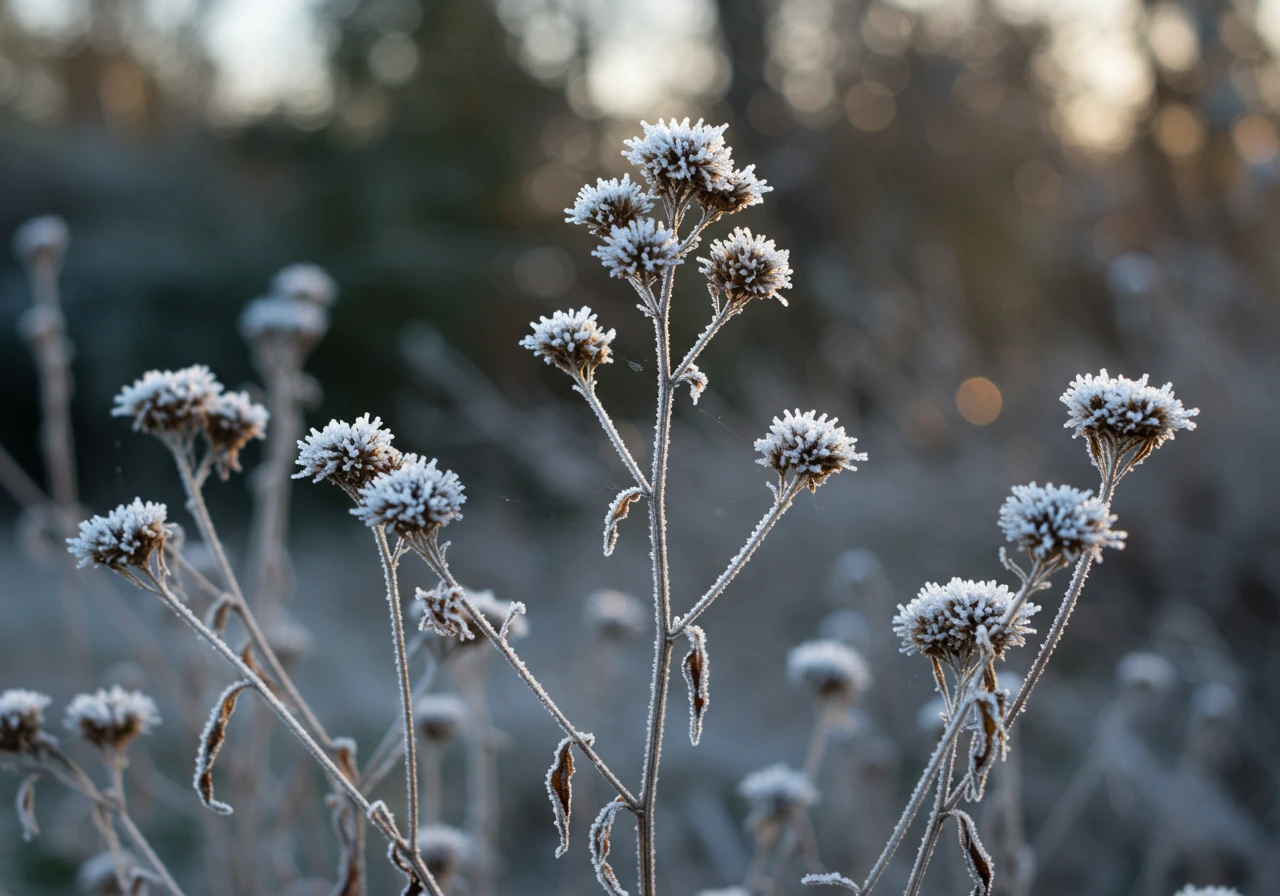
Spring Awakening (Late March – May)
Wait for warmer temps (10°C+) before major cleanup to protect overwintering insects. Cut back *most* old stems, leaving some short ones for nesting bees. Weed early! Assess winter survival, plan additions. Plant new natives and refresh mulch. Need help with the big spring start? Consider garden installation or yard cleanup services.
Summer Serenity (June – August)
Water established natives *only* during prolonged drought; water new plants regularly. Observe and enjoy pollinator activity! Deadhead spent flowers if desired, or leave for seeds. Minimal weeding needed, especially with good mulch cover.
Autumnal Equanimity (September – November)
Leave stems and seed heads standing for winter bird food and insect shelter. Rake leaves off lawns but consider leaving them on beds as mulch (shredding helps). Fall is another great planting window. Do a final weed check. Plan next year or book fall cleanup help.
Winter Respite (December – Early March)
Hands off! Enjoy the structural beauty of dormant plants in snow. Support birds with feeders and water. Dream, plan, and browse ideas for next season. Manage ongoing service needs via the customer portal if applicable.
See? Caring for a native garden is mostly about observing, enjoying, and doing *less* “traditional” gardening. It’s a rhythm that works with nature, not against it.
Clay & Water-Wise Wins
Gardening in Ottawa clay, whether you’re in Manotick or Metcalfe, doesn’t have to mean endless watering! Native plants are your secret weapon for a gorgeous, water-smart landscape. Here are the key takeaways:
- Go Native & Tough: Choose natives known to handle clay (Coneflower, Switchgrass). They need less water once established. Good prep helps; consider a Metcalfe yard clean-up service for a fresh start.
- Mulch Like You Mean It: Apply 2-3 inches of organic mulch to slow evaporation, prevent crusting, and reduce watering needs.
- Water Smart, Not Hard: Water new plants deeply but infrequently. Established natives usually only need water during extreme drought. You might even send a mental thank you to yourself later!
- Top-Dress, Don’t Dig Out: Improve clay slowly with annual compost top-dressing. If you received an estimate for soil work, provide estimate feedback!
- Observe & Adapt: Learn your plants’ needs in your specific spot. Track rainfall and water only when necessary. Manage preferences easily through the customer portal.
FAQs: Your Winchester & Ottawa Native Plant Conundrums Cracked
Not at all! Like any garden, the “look” depends on design and maintenance. Many native plants offer stunning flowers, colours, and textures. You can create neat, formal beds or relaxed, naturalistic styles. Check out these beautiful native garden transformations for inspiration – they prove local plants can be incredibly stylish and tidy with thoughtful landscaping.
Look for local nurseries specializing in Ontario native species – they’re becoming more common! Some garden centres have dedicated native sections too. Conservation authority plant sales (like those potentially from South Nation Conservation) are another great source. Our guide on choosing landscaping materials offers general tips for finding quality suppliers, which applies to sourcing healthy, locally-grown native plants as well.
That’s a valid concern, but easily managed! “Native” doesn’t mean “invasive.” While some natives spread readily (great for filling areas!), many are well-behaved clumpers. Research plant habits before buying. If you’re unsure about controlling a specific enthusiastic grower in your Nepean yard, feel free to contact us for plant selection advice.
While many natives are tough clay survivors, adding compost is always beneficial. It improves drainage and workability over time, making roots happier. You don’t need to replace soil, just top-dress annually. Improving large clay areas *is* work; sometimes initial garden clean-up and prep services can tackle the heavy lifting to get you started.
Absolutely! Many gardeners successfully mix natives with well-behaved non-native plants. The key is grouping plants with similar sunlight and water needs together. Just ensure your non-natives aren’t aggressive species that will outcompete the locals. For personalized ideas on blending plants beautifully in your Greely garden, you can always get in touch with landscaping experts.
Significantly less than many traditional gardens! Once established (after year one or two), most need little to no supplemental watering except in severe drought. Forget fertilizing. Main tasks are usually occasional weeding (mulch helps!) and an optional cut-back in late fall or early spring. It’s about working smarter, not harder, for a beautiful yard.
Conclusion: Love Your Landscape, Naturally!
So there you have it! Gardening in that sometimes stubborn Ottawa clay, whether you’re dealing with it in Greely or near Winchester, doesn’t have to feel like an annual wrestling match. By choosing beautiful, resilient native plants, you’re signing up for less back-breaking work and way more enjoyment watching your landscape thrive. Remember, these local superstars grew up here – they’re already adapted to our soil and climate. That means less watering drama, no need for fussy fertilizers, and the awesome bonus of creating a lively haven for local bees and butterflies. It’s all about working smarter, not harder, using simple allies like compost and mulch to gently improve your soil structure over time.
You absolutely can create a stunning, sustainable garden that gives back to the environment and asks for surprisingly little fuss in return. Imagine stepping outside into your very own low-maintenance, beautiful natural oasis! It’s totally achievable, one native plant at a time.
Feeling inspired but not sure where to start with your own patch of clay? Explore our website for more native garden ideas and resources. If you’d like a hand turning that inspiration into reality, from tackling the initial site prep to planting your chosen natives, don’t hesitate to reach out to our friendly team. Ready to take the first easy step? Request your free, no-obligation estimate today and let’s discuss how we can help bring your natural landscape dreams to life right here in the Ottawa area!

